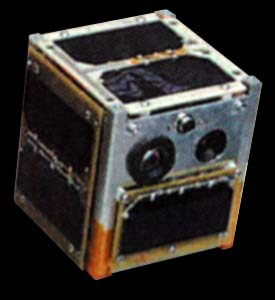Thank you very much for visiting Gunter's Space Page. I hope that this site is useful and informative for you.
If you appreciate the information provided on this site, please consider supporting my work by making a simple and secure donation via PayPal. Please help to run the website and keep everything free of charge. Thank you very much.
CanX 1

CanX 1 [UTIAS]
The CanX-1 (Canadian Advanced Nanospace eXperiments) PicoSatellite Mission is the first in a series of CubeSat Missions at the University of Toronto. The Canadian Advanced Nanospace eXperiments (CanX) promote the development and testing of low-cost space technologies and push the envelope of performance that can be achieved with small low-power devices. The first mission, CanX-1, will launch in mid 2003 and will demonstrate key enabling technologies for future missions including:
- A Powerful CubeSat Computer based on an Atmel ARM microprocessor.
- Triple-Junction GaAs Solar Cells with Peak Power Tracking
- CMOS imagers for observation and Star Tracking
- Active Magnetic Control including B-dot Detumbling and 3-axis stabilization
The satellite is a 10 cm cube, with a mass less than one kilogram. The satellite generates about two Watts of peak power using direct energy conversion. More power is available when peak power tracking is enabled.
The satellite was successfully deployed in orbit, but no signals were received.
| Nation: | Canada |
|---|---|
| Type / Application: | Technology |
| Operator: | UTIAS (University of Toronto, Institute for Aerospace Studies) |
| Contractors: | UTIAS |
| Equipment: | |
| Configuration: | CubeSat (1U) |
| Propulsion: | None |
| Power: | Solar cells, batteries |
| Lifetime: | |
| Mass: | 1 kg |
| Orbit: | 817 km × 829 km, 98.73° |
| Satellite | COSPAR | Date | LS | Launch Vehicle | Remarks | |
|---|---|---|---|---|---|---|
| CanX 1 | 2003-031H | 30.06.2003 | Pl LC-133/3 | Rokot-KM | with MOST, MIMOSA, AAU-Cubesat, DTUSat, CUTE 1, XI-IV, QuakeSat, Monitor-E GVM |
References:
- UTIAS: CanX 1 website
